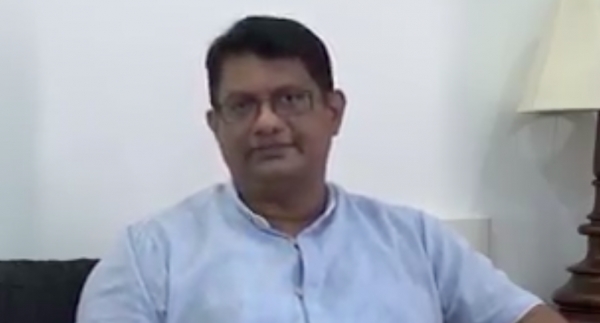Former Chairman of Sri Lanka Tourism Dr. Nalaka Godahewa has rejected the validity of a New York Times article, titled ‘How China Got Sri Lanka To Cough Up A Port’.
“The article that appeared on New York Times on 25th June, about Hambantota Port, is typical fake news - that American President Donald Trump is talking about,” he said.
“New York Times has a history of controversial news items,” he said, adding, “when you go through the article you can clearly see, it has been written with a bias.”
“Most of the information in that article, is factually incorrect,” he reiterated, explaining that more than 50% of the article is “definitely wrong”.
He said that contrary to what the article expounded, former President Mahinda Rajapaksa had not conceptualised the deal with China over the Hambantota Port. “The Hambantota Port project was conceptualised long before President Mahinda Rajapaksa came into power. So many previous government had this in their plans. But nobody could implement it, because of the war and many other reasons. (Former) President Mahinda Rajapaksa, like many other delayed projects, took the challenge and implemented that,” he said.
He also said former President Mahinda Rajapaksa did not go to China for money, but went to India - and was rejected, and only thereafter did Sri Lankan borrow money from China. “The article also tries to give the impression that China lended money at very high interest rates. Again factually incorrect,” he said. “It was only the first tranche, of about 300 million or so that came at an interest rate of 6%, which is high, but thereafter they gave the balance at such low interest rates that the overall average interest rate came to about 3.2%,” he said.
Rejecting the impression that Sri Lanka entered a debt trap, Dr. Godahewa said, Sri Lanka had only borrowed 1250 million USD from China, to be paid back in 27 years, with accumulated interest at a total amount of 1750 million USD.
He said that by the time the current government came into power in 2015, the Ports Authority had already paid 500 million USD. “Whoever is trying to create this impression is trying to mislead the public,” he said. “ It was the best investment Sri Lanka made. It was well thought out plan, conceptualised long before the Rajapaksa’s came into power. Unfortunately, the current government whose only economic management strategy is to increase taxes and sell assets gave that port away pfr 99 years. That is where the crime occurred,” Dr. Godahewa said.









